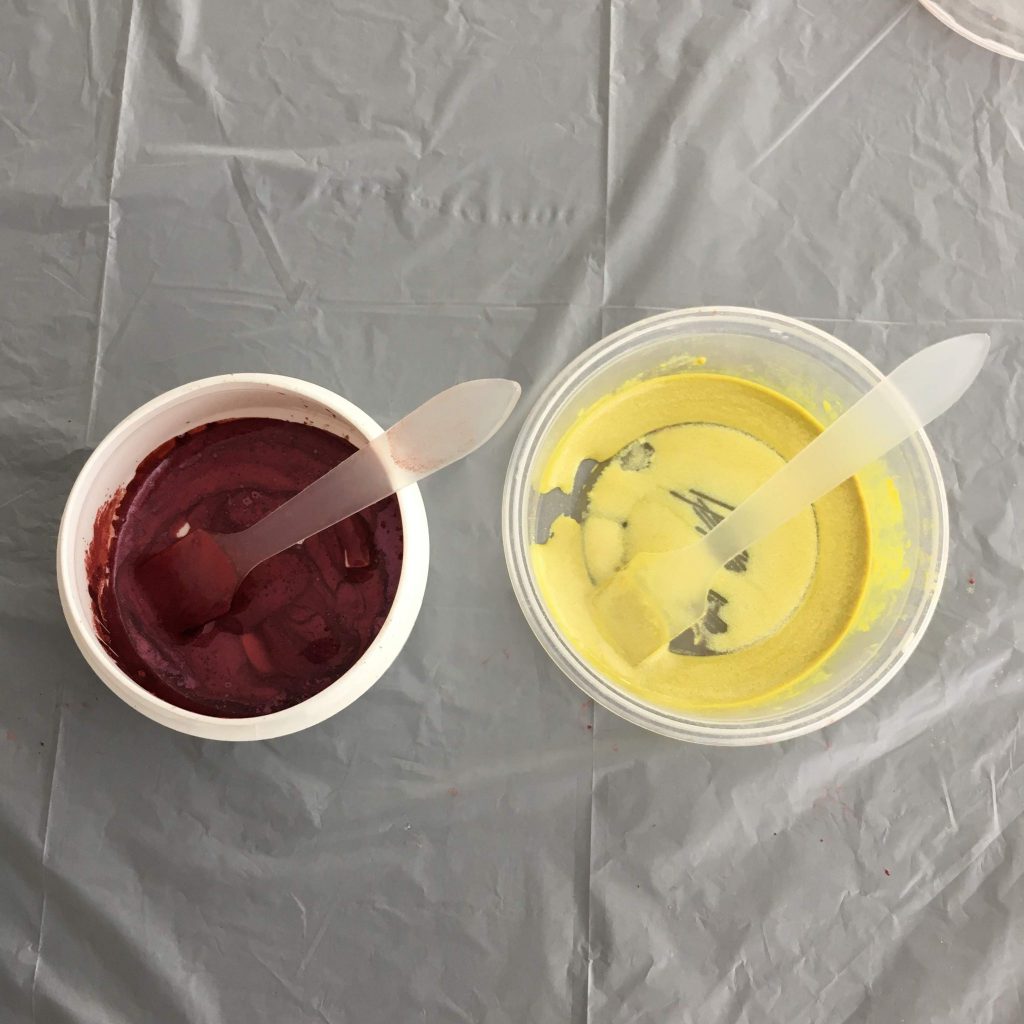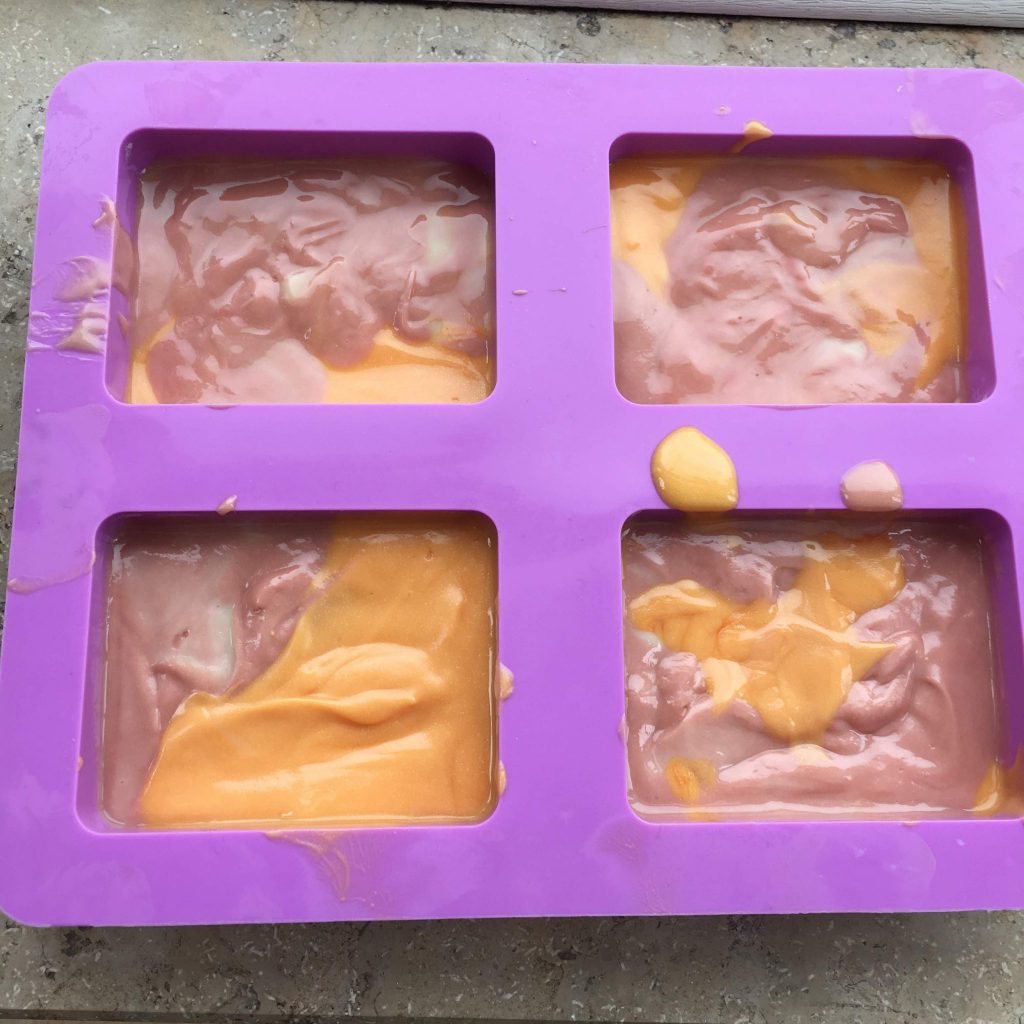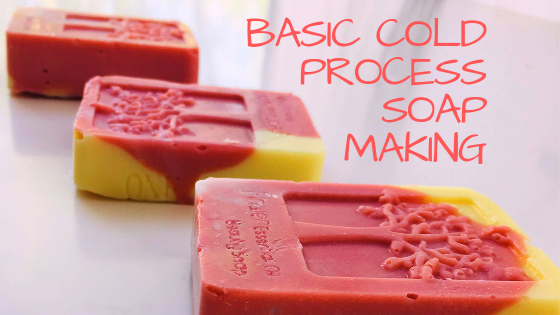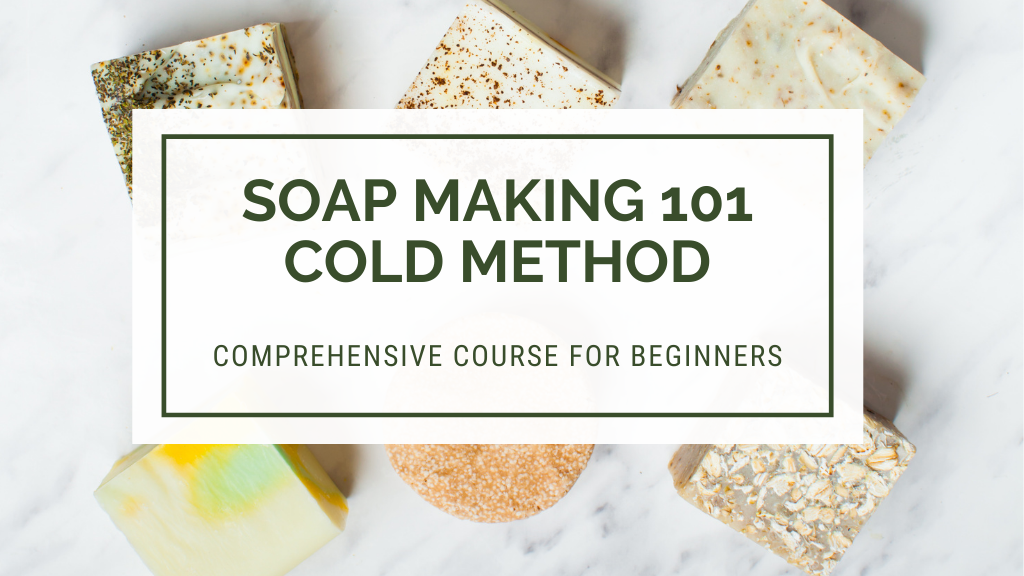The production of my own hand soap is one of my favorite ways to move towards a more sustainable life. Today, I prepared my own new soap through the cold process. Cold process soap is a chemical reaction that occurs between oils and lye. Learn more about it by reading my previous post. Recently, I also write a post about what you should know (but nobody says about it) before starting to make soap. Please read it, could be important! You can find it here!

Learn everything about soap making with my comprehensive course! Everything from ingredients, to lye discount, superfat, and much more!
Basic Cold Process Soap Making | recommendation
Lye (sodium hydroxide) is a really DANGEROUS compound that has to be handle carefully. It’s a caustic substance and can hurt you if it splits on your eyes or skin. For these reasons, it’s necessary to wear protected laboratory goggles and gloves as well as long sleeves and long pants whenever lye is used. I also recommend using a mask because lye gives off fumes when it’s poured into water. It’s better to work in a ventilated area, so open the windows to be more careful. Another important thing is that this procedure should not be done if there are children nearby, because we are going to handle dangerous products.
Once that all our security measures are taken, we can start with the soap making process.
affiliate disclosure: this post contains affiliate links about products that I tried and recommend. By clicking through them and making a purchase, I may receive a small commission WITHOUT any additional cost to you.
Gabi
Basic Cold Process Soap Making | what you will need
To make soap using the cold method, it is important to have tools and some equipment. I’ve written a list that might be useful to you. You can find it by clicking here.
- 70g (2.4oz) olive oil (find it here)
- 30g (1.05oz) cocoa butter (find it here)
- 60g (2.11oz) shea butter (find it here)
- 40g (1.41oz) coconut oil fract. (find it here)
- 60g (2.11oz) deionized water (find it here)
- 27,33g (0.96oz) lye (find it here)
- protective gloves (find it here)
- safety goggles (find it here)
- silicon molds (find it here)
- mica powder (find them here)
- hand blender
It’s really important to respect the quantity to guarantee the success of the reaction. Remember that everything you are going to use (immersion mix, spoons, containers ) should only be used for the production of soap and no longer in the kitchen !!
Basic Cold Process Soap Making | How to make it
First and foremost protect yourself with safety gloves and goggles and do it in a well-ventilated room. We are using lye that is extremely caustic so be careful. In case of contact with the skin, wipe the excess of lye off and flush the area with running water, and of course, call the doctor!
Cold Process Soap Making | Step by Step
- Prepare the colors just mixing the mica with some olive oil.

- Weigh the water in a polypropylene plastic container (symbol 5)
- Weight the oils and butter in a jar, big enough to contain about 300g (10.6Oz) of the finished product
- Warm up the oils in a water bath or microwave till they are melted and then let cool them down till 45°C (113°F)
- Weigh the lye in another glass
- Pour gently lye INTO water and mix with a wooden or glass spoon. I would not use plastic or metal spoon to avoid potential reactions with the lye. REMEMBER: DON’T pour water into the bowl of lye. NEVER DO IT! The reaction is too energetic and will hurt you seriously!
- The temperature of the solution will increase up to about 90°C (194°F). When the lye is completely dissolved, let cool it down till about 45°C (113°F).
- Oil and lye solution should have the same temperature.
- Pour the lye solution into the oil jar and blend the two phases with a hand blender.
- When the solution gets thicker and opaque, divide the compound into two containers, and add the colors. Just mix again and pour it into the silicone molds.

I prefer to leave the soap undisturbed for at least a week to be sure that the reaction ends. After this time, just remove the soap from the mold and start using it. 🙂

I really love to prepare my own soap! I find this hobby creative and useful. And you? Have you already prepare one?
Don’t waste more time looking for information! Learn everything about soap making in just one course! Everything you need to know to start making your handmade soap!

Ready to make your first soap with my FREE guide to making soap?

If you like my content, help me with a small donation. With your support, I would like to buy new ingredients and create original healthy beauty products! Thank you :).
Gabi


